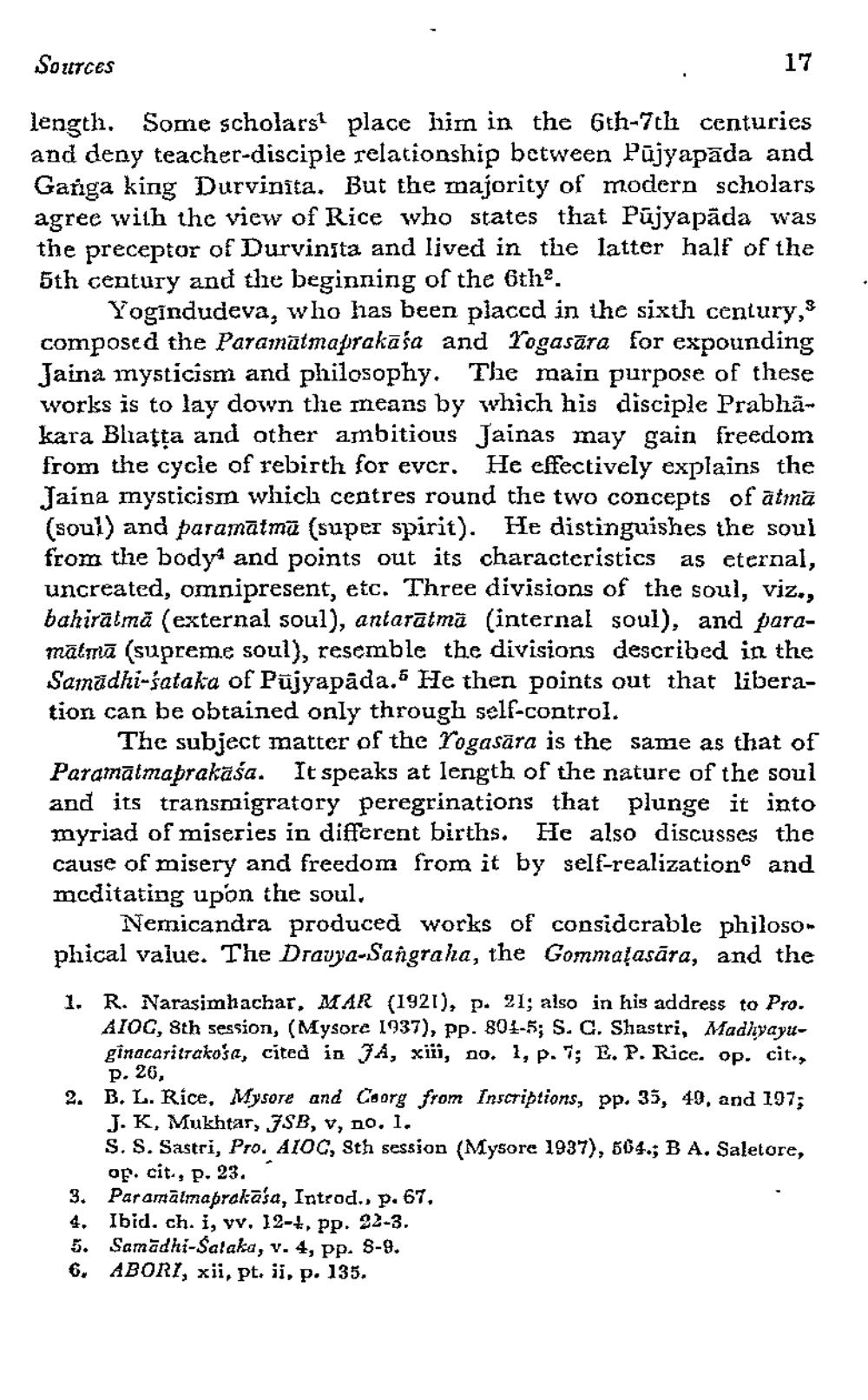________________
Sources
17
length. Some scholarst place him in the 6th-7th centuries and deny teacher-disciple relationship between Pūjyapāda and Ganga king Durvinita. But the majority of modern scholars agree with the view of Rice who states that Pūjyapāda was the preceptor of Durvinsta and lived in the latter half of the 5th century and the beginning of the 6th.
Yogindudeva, who has been placed in the sixth century, 8 composed the Paramātmaprakāśa and Yogasära for expounding Jaina mysticism and philosophy. The main purpose of these works is to lay down the means by which his disciple Prabhākara Bliaţta and other ambitious Jainas may gain freedom from the cycle of rebirth for ever. He effectively explains the Jaina mysticism which centres round the two concepts of atma (soul) and paramātma (super spirit). He distinguishes the soul from the body, and points out its characteristics as eternal, uncreated, omnipresent, etc. Three divisions of the soul, viz., bahiralmă (external soul), antarātmā (internal soul), and paramalmā (supreme soul), resemble the divisions described in the Samadhi-sataka of Pūjyapada. He then points out that liberation can be obtained only through self-control.
The subject matter of the Togasāra is the same as that of Paramātmaprakasa. It speaks at length of the nature of the soul and its transmigratory peregrinations that plunge it into myriad of miseries in different births. He also discusses the cause of misery and freedom from it by self-realization and mcditating upon the soul.
Nemicandra produced works of considerable philosophical value. The Dravya-Sangraha, the Gommalasāra, and the
1. R. Narasimhachar, MAR (1921), p. 21; also in his address to Pro.
AIOC, 8th session, (Mysore 1937), pp. 801-5; S. G. Shastri, Madhyayuginacaritrakoše, cited in JA, xiii, no. 1, p. 7; E. P. Rice. op. cit.,
p. 26, 2. B. L. Rice, Mysore and Coorg from Inscriptions, pp. 35, 49, and 197;
J. K, Mukhtar, JSB, v, no, I. S. S. Sastri, Pro. AIOC, Sth session (Mysore 1937), 504.; B A. Saletore,
of. cit., p. 23. 3. Paramātmaprakāśa, Introd., p. 67, 4. Ibid. ch. i, yv, 12-, pp. 22-3. 5. Samadhi-Salaka, v. 4, pp. 8-9. 6. ABORI, xii, pt. ii, p. 135.




